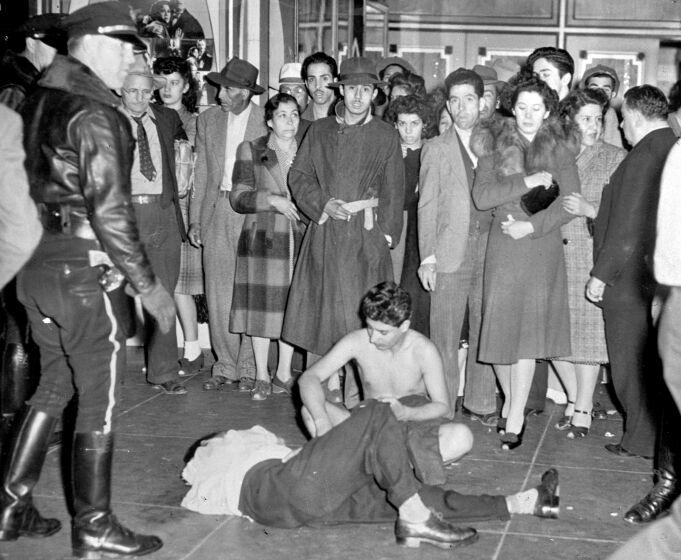L.A. County supervisors denounce 'dark chapter' of Zoot Suit Riots 80 years later

- Oops!Something went wrong.Please try again later.
Nearly 80 years after the infamous Zoot Suit Riots, the Los Angeles County Board of Supervisors voted unanimously to condemn the violent attacks by racist mobs on Latino, African American and Filipino youths as "one of Los Angeles' most shameful moments in history."
Supervisor Hilda Solis marked the anniversary of the 1943 attacks Tuesday by introducing a motion denouncing the devastation from the riots and recommitting to fighting racial discrimination.
Local residents joined the board during the unanimous vote while wearing outfits that resembled the zoot suits favored by many minority youths in Los Angeles in the 1940s.
Supervisor Holly Mitchell said people are still being targeted for their attire and culture.
"We've seen that repeated over and over in our history, where groups who attempt to express our cultural pride and identity through clothes, music, style, hair ... whatever the case may be, how it's frowned upon and quite frankly feared," Mitchell said. "And the effort to erase and eliminate never seems to be successful."
The attacks were incited by men in the military who roamed the streets in uniform, some armed with clubs, looking to start fights with minority youths, known as "pachucos," who were wearing zoot suits, Solis said.
The young men who were targeted wore wide-legged, high-waisted, pegged trousers and long coats with wide lapels and wide padded shoulders that were part of the zoot suit style. Many of the victims were disrobed by their attackers, according to reports from the time.
Racial tensions in Los Angeles were already high, partly due to the Sleepy Lagoon murder trial, at which racist stereotypes of Latino youths were introduced as evidence.
Months before the riots, a young man named José Díaz was stabbed to death near a swimming hole that became known as Sleepy Lagoon in southeast L.A. Police, based on what Solis characterized Tuesday as a shoddy investigation and limited evidence, rounded up nearly 300 suspects, mainly Latino youths, in connection with the slaying.
Twenty-two defendants were charged with murder. At the trial, a sheriff’s captain testified that “the Mexican element” had an innate “desire to use a knife or some lethal weapon. In other words, his desire is to kill, or, at least, let blood.”
The judge presiding over the trial refused to let the defendants change their clothes after prosecutors requested that the jury see the youths wearing their "zoot suit" attire that was worn only by "hoodlums," according to news reports from the time.
That sentiment fed into the racist attacks against youths who wore the zoot suits, according to Solis.
Following the riots, the Los Angeles City Council seriously contemplated banning zoot suits within the city.
At the time, L.A. Mayor Fletcher Bowron said that the attacks against zoot suit-wearing youths were not inspired by "racial discrimination" and harangued critics who questioned the police for arresting victims in the attacks.
Bowron framed the issue squarely around "youthful gangs" and asked military personnel to make sure that "soldiers and sailors do not pile into Los Angeles for the purpose of excitement and adventure and what they might consider a little fun by beating up young men whose appearance they do not like."
Seventeen defendants were convicted in the Sleepy Lagoon murder trial, but an appellate court in October 1944 found there was insufficient evidence in the murder trial and reversed all the convictions.
This story originally appeared in Los Angeles Times.

